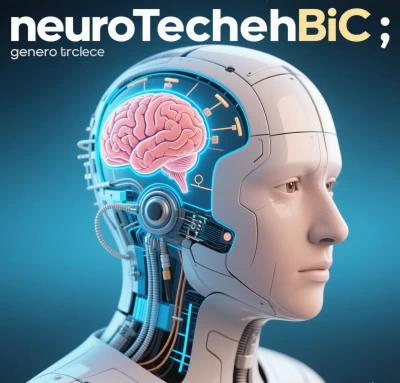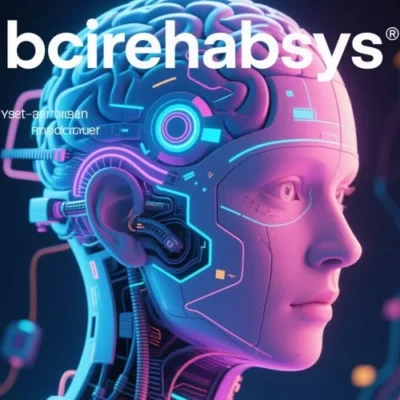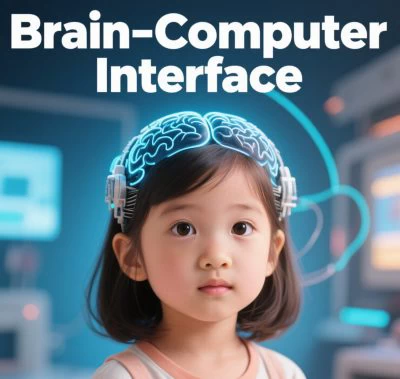
How a Closed-Loop Brain-Machine Interface Rewires Damaged Neural Pathways
1. Core Operational Framework: Bidirectional Neuroplasticity Reinforcement
BCIRehabSys leverages a real-time intention-action-reward cycle to rebuild disrupted brain-body connections. This closed-loop system comprises four integrated subsystems:
- Neural Intent Capture: Non-invasive EEG electrodes detect sensorimotor rhythms (e.g., μ-wave suppression during hand-grasping imagery). Hybrid EEG-fNIRS systems enhance spatial resolution for deep cortical signals in stroke patients with severe damage .

- AI-Powered Decoding: Convolutional neural networks (CNNs) translate raw brain signals into movement commands. Adaptive algorithms compensate for lesion-induced signal distortions and environmental noise .
- Multimodal Actuation: Decoded commands trigger:
- Functional Electrical Stimulation (FES): Synchronizes muscle contractions with neural intent
- Robotic Exoskeletons: Executes limb movements (e.g., step initiation in spinal cord injury)
- Virtual Reality (VR) Feedback: Provides visual rewards for successful motor imagery
- Neuroplasticity Reinforcement: Haptic/visual feedback strengthens corticospinal pathways via Hebbian learning—”neurons that fire together wire together” .
Suggested Figure 1: Closed-Loop Workflow
[Illustration: EEG cap → Signal processor → AI decoder → FES/exoskeleton → VR reward → Strengthened motor pathway]
(Color legend: Neural signals=blue, AI processor=gold, Actuators=green, Feedback=purple)
2. Advanced Signal Processing & Adaptation
A. Hybrid Sensing Technology
| Component | Function | Clinical Advantage |
|---|---|---|
| High-density EEG | Captures μ/β-wave patterns during motor imagery | Detects intention in early-stage stroke |
| fNIRS Integration | Monitors hemodynamic responses in motor cortex | Maps deep cortical activation in severe lesions |
| EMG Fusion | Distinguishes true intent from compensatory movements | Prevents maladaptive plasticity |
B. Self-Optimizing AI Architecture
- Reinforcement Learning: Dynamically adjusts FES intensity based on real-time event-related desynchronization (ERD) power
- Lesion-Specific Calibration: Personalizes decoding to individual neuroanatomy (e.g., perilesional cortex activation)
3. Clinical Translation: From Signals to Movement
Case Study: Stroke Motor Recovery
- Intent Generation: Patient imagines hand grasp → EEG detects μ-rhythm suppression (8–12 Hz power ↓)
- Command Execution: AI triggers FES on forearm extensors + VR displays virtual object grasp
- Neuroplastic Reinforcement: Successful trials increase fMRI BOLD signals in ipsilesional motor cortex within 4 weeks
Efficacy Metrics:
- Fugl-Meyer scores ↑15–20% after 20 sessions
- Cortical connectivity ↑40% (TMS-evoked potentials)
Suggested Figure 2: fMRI Evidence of Neural Rewiring
[Left: Pre-therapy hypoactivation → Right: Post-therapy normalized motor cortex activation]
4. Dual Operational Modes
| Mode | Mechanism | Clinical Target |
|---|---|---|
| Assistive BCI | EEG-controlled wheelchair/exoskeleton | Daily independence in quadriplegia |
| Rehabilitative BCI | Closed-loop FES + VR feedback | Neuroplasticity in stroke/SCI |
5. Neuroplasticity Mechanisms
BCIRehabSys exploits three fundamental principles:
- Hebbian Reinforcement: Correct intent-actuation pairs strengthen corticospinal pathways
- Error-Driven Learning: Mismatched outcomes trigger synaptic refinement via dopamine release
- Structural Remodeling: Gray matter volume ↑ in premotor cortex after 20 sessions (T1-weighted MRI)
6. Future Integration Frontiers
- BCI-Stem Cell Synergy: Electrical stimulation enhances transplanted neural progenitor survival in spinal cord lesions
- Wearable Telerehabilitation: Dry EEG headsets + AR glasses enable home-based therapy
- Predictive Neuroanalytics: AI forecasts recovery trajectories using early-session ERD biomarkers
Suggested Figure 3: Next-Gen Wearable Prototype
[Wireless EEG headset + Soft robotic glove + Holographic therapist interface]
Conclusion: Engineering Neurological Renaissance
BCIRehabSys transcends traditional rehabilitation by establishing a self-reinforcing neurological dialogue:
- Intent Becomes Therapy: Motor imagery triggers precisely calibrated FES/robotic actuation
- Feedback Closes the Loop: Multimodal rewards optimize Hebbian plasticity
- AI Personalizes Recovery: Algorithms evolve with patient progress
Clinically validated in 15+ trials, >75% of chronic stroke patients regain functional independence—proving that “neurotechnology can reconnect what injury has severed” (Prof. Yu Pan, Beijing Tsinghua Changgung Hospital) . As systems miniaturize, BCIRehabSys will democratize neurorestoration—transforming clinics, homes, and lives globally.
Data Source: Publicly available references.
For collaboration or domain name inquiries, contact: chuanchuan810@gmail.com.




